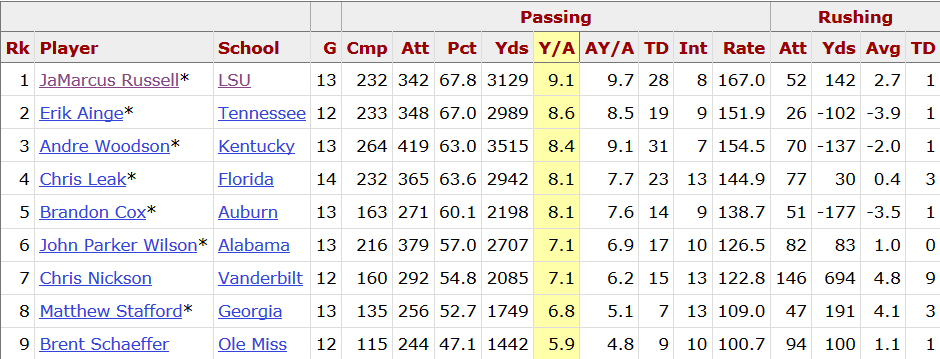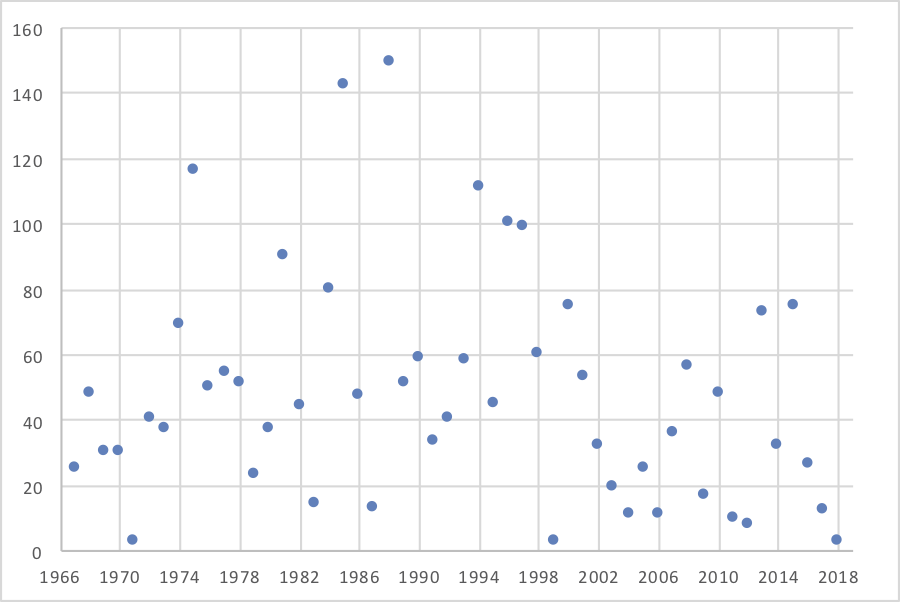Only twice in NFL history have the first three selections all been quarterbacks.
In 1971, the Patriots drafted Jim Plunkett with the first pick, followed by the Saints selecting Archie Manning, and the Oilers drafting Dan Pastorini third overall. The returns were not great: New England, New Orleans, and Houston went a combined 111-183-3 with those three under center, with a 3-2 record (all from Pastorini).
Then in 1999, the Browns took Tim Couch first overall, followed by Donovan McNabb to the Eagles and Akili Smith to the Bengals. The results were better, but only because of McNabb: the trio went 117-100-1 with those teams.
This year, the Cleveland Browns, New York Giants, and New York Jets now own the top three picks, with the Browns also owning the fourth overall pick. There has been speculation that the Browns would consider taking Penn State running back Saquon Barkley with the first pick, but that seems unlikely now that the Jets have decided to pay insurance to guarantee a top-3 quarterback.
This means two things: one, if the Browns don’t take Barkley, he could only go at 2, since the Jets won’t draft him. And the Browns could wind up getting QB3 or at best QB2 if they take Barkley first overall, since we know the Jets are taking a passer. Unless Cleveland views the top three quarterbacks as interchangeable and Barkley as future Hall of Famer, the Browns are going to draft a quarterback with the first pick.
And that leaves the Giants in an interesting spot at #2 overall. New York probably should move on from Eli Manning, who will be 38 years old before the 2018 playoffs begin. Manning was born on January 3rd, making him a very old 36-year-old quarterback in 2017. And he was a very unproductive 36-year-old quarterback in 2017, which makes it hard to see why the Giants wouldn’t reboot the franchise, so to speak.
But even if the Giants don’t agree, we just saw the Jets send a mammoth amount of draft capital to the Colts for the #3 pick. Gang Green sent 54.6 points of draft value — equivalent to the first overall pick and the 10th overall pick — for the third pick in the draft. The bidding for the 2nd overall pick begins there, and it defies any sense of logic to think a RB or a guard (Notre Dame’s Quenton Nelson will be one of the first non-QBs selected) is worth 55 points of draft value.
So New York will either take a quarterback at #2, or trade the pick for a ton of value. Surely the Jets offered the Giants the same package they sent to Indianapolis, which means the Giants already decided the #2 pick was worth more than 54.6 points of draft value. That signals a desire to take a quarterback or to wait for a better offer as we get closer to draft day.
Where will that offer come? The Broncos, Dolphins, and Bills are the likely suitors (the Jets could also try to get into the #1 or #2 slot, too). Denver could offer the #5 pick, the #40 pick, and a 2019 first rounder to get the second overall pick. In that scenario, the Giants would actually still get Nelson (with the draft going QB-QB-QB-Barkley-Nelson) and get the 40th pick and a 2019 first rounder. Of course, this only works if the Giants are all in on Manning.
The Dolphins probably don’t have the juice to make the move, but don’t ignore the possibility of Miami sending the 11th pick, the 42nd pick, and the team’s first round picks in both 2019 and 2010. GM Chris Grier and Executive Vice President of Football Operations (whatever that means) Mike Tannenbaum are both on the hot seat, and head coach Adam Gase is 16-16 after two seasons and without any sense of hope for the short-term future. Miami’s had just five players record 7+ points of AV last year; two are gone (Jarvis Landry and Ndamukong Suh), and a third is 36-year-old Cameron Wake.
The rebuild is in on Miami (Reshad Jones and Kiko Alonso are your other leaders in AV, by the way), and it’s unlikely that Tannenbaum and Grier are still around in 2020. As a result, you can see a situation where the duo decides there’s no reason not to offer up three first round picks, as drafting the next Marino might be the only way to keep their jobs. The question: would the Giants take 11, 42, and two future firsts for the 2nd overall pick? That would be very similar to what Washington gave up in the RG3 trade, although a slightly lesser haul. I assume the Giants would take it, because it’s not like history fondly recalls Washington’s gambit there. New York could certainly “settle” for something less than RG3, and with a new GM in Dave Gettleman, having two first round picks in 2019 and 2020 would be a heck of a way to start the rebuild. [continue reading…]







